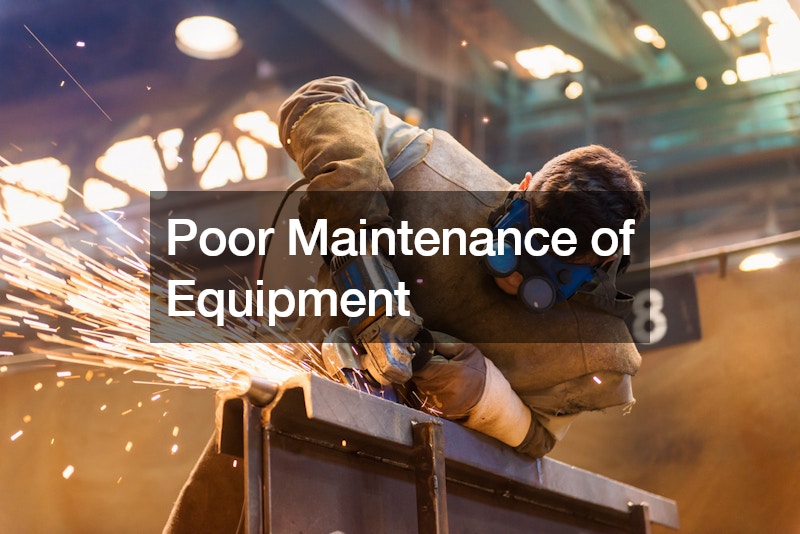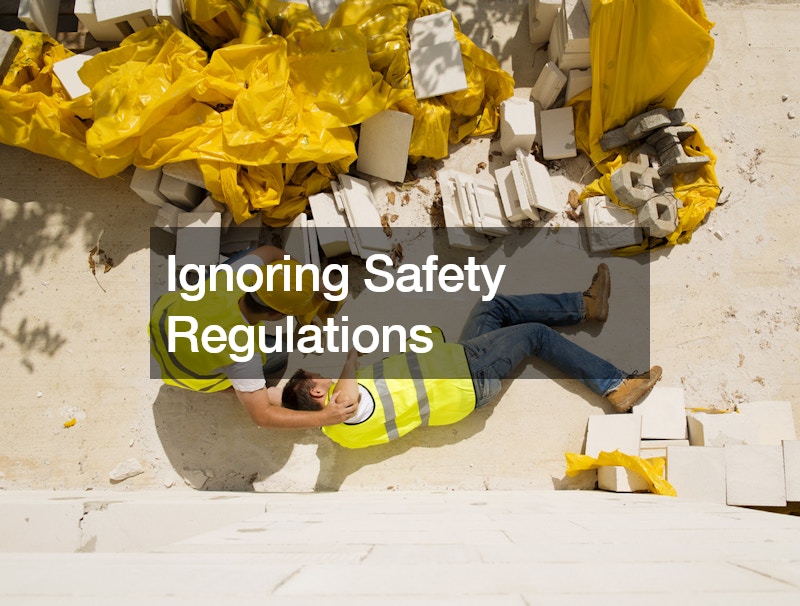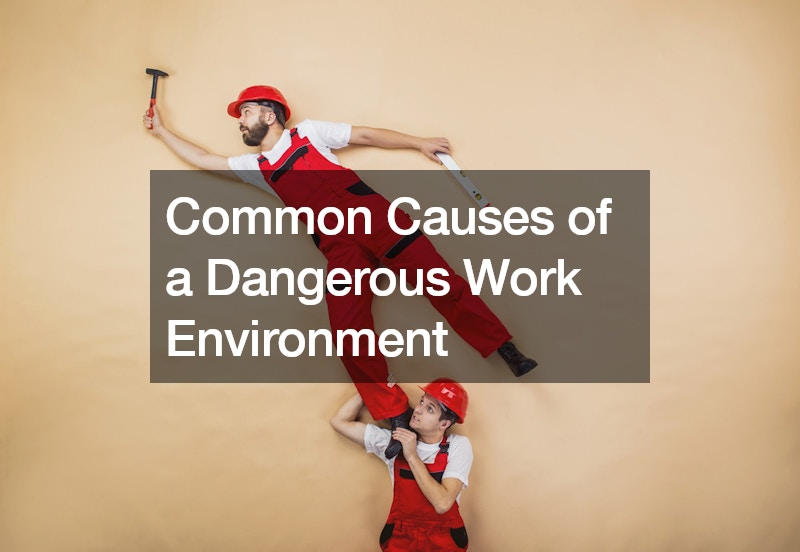Ensuring a safe work environment is critical for the well-being of employees and the overall success of a business. A dangerous work environment can lead to severe injuries, decreased productivity, and legal consequences. Understanding the common causes of workplace hazards is essential for business operators who want to create a safer work environment. By identifying and mitigating these risks, companies can protect their employees and ensure smooth operations.
In various industries, factors such as inadequate safety training, poor maintenance of equipment, and insufficient lighting can contribute to a dangerous work environment. Addressing these issues requires a proactive approach, including regular safety training, routine equipment maintenance, and proper workplace design. This blog explores these common causes and provides specific examples from different industries to illustrate how these hazards can be effectively managed. By implementing best practices and adhering to safety standards, business operators can significantly reduce the risks associated with a dangerous work environment.
Inadequate Safety Training
Inadequate safety training is a major contributor to a dangerous work environment. When employees are not properly trained on safety protocols, equipment usage, and emergency procedures, the risk of accidents and injuries increases significantly. Comprehensive safety training ensures that all employees are aware of potential hazards, know how to prevent accidents, and understand the proper response in case of an emergency. Regular safety training sessions and refresher courses are essential for maintaining a safe workplace.
For a driving school, inadequate safety training can have severe consequences. Instructors and students must be well-versed in road safety rules, defensive driving techniques, and emergency procedures. If a driving school fails to provide thorough training, it not only endangers the lives of students and instructors but also poses a risk to other road users. By implementing rigorous safety training programs, a driving school can create a safer learning environment and reduce the likelihood of accidents. Regular updates to the curriculum to reflect the latest safety standards and practices can further enhance the effectiveness of the training.
Poor Maintenance of Equipment

Poor maintenance of equipment is another common cause of a dangerous work environment. When machinery and tools are not regularly inspected and maintained, they can malfunction, leading to accidents and injuries. Regular maintenance schedules and inspections are vital to ensure that all equipment is in good working condition and to identify potential issues before they become serious hazards. Proper maintenance not only enhances safety but also extends the lifespan of the equipment.
In the field of tig welding, poor maintenance of welding machines and related equipment can lead to dangerous situations. Malfunctioning welding machines can cause electric shocks, fires, and exposure to harmful fumes. Business operators must ensure that all welding equipment is routinely inspected, cleaned, and repaired as needed. By prioritizing equipment maintenance, a tig welding business can reduce the risk of accidents and create a safer work environment for its employees. This includes implementing a maintenance log and schedule to track the condition and service history of all equipment.
Insufficient Lighting
Insufficient lighting in the workplace is a significant factor that can contribute to a dangerous work environment. Proper lighting is essential for ensuring that employees can see clearly, perform tasks accurately, and avoid accidents. Poor lighting can lead to eye strain, reduced productivity, and an increased risk of trips, falls, and other accidents. Ensuring adequate lighting in all areas of the workplace is critical for maintaining safety and efficiency.
For local electricians, insufficient lighting can pose serious risks during installation and maintenance tasks. Electricians need adequate lighting to accurately identify wiring, components, and potential hazards. If a worksite lacks proper lighting, it can result in incorrect wiring, electrical shocks, or other dangerous situations. Local electricians must ensure that all job sites are well-lit and that they have access to portable lighting solutions when needed. By prioritizing proper lighting, electricians can work more safely and effectively, reducing the risk of accidents and ensuring high-quality workmanship.
Lack of Emergency Procedures

A lack of emergency procedures is another common cause of a dangerous work environment. Emergency procedures are essential for preparing employees to respond effectively to various emergencies, such as fires, medical incidents, or natural disasters. Without clear and well-practiced emergency procedures, employees may panic or respond inadequately, leading to increased injuries and chaos. Developing and regularly updating emergency plans, conducting drills, and ensuring all employees are familiar with the procedures are crucial steps in maintaining workplace safety.
In the context of a local roofing company, the lack of emergency procedures can be particularly hazardous. Roofing work involves significant heights, heavy materials, and the potential for falls or severe weather conditions. If an emergency, such as a sudden storm or an accident, occurs while workers are on a roof, having well-established emergency procedures can make the difference between a safe evacuation and a catastrophic outcome. A local roofing company should develop comprehensive emergency response plans, including rescue procedures for workers at height, and regularly train employees on these protocols to ensure they are prepared for any situation.
Exposure to Hazardous Materials
Exposure to hazardous materials is a critical issue that can create a dangerous work environment. Many industries involve the use of chemicals, dust, fumes, or other hazardous substances that can pose health risks to employees. Without proper handling, storage, and protective measures, exposure to these materials can lead to serious health problems, including respiratory issues, skin irritation, and long-term illnesses. Implementing safety protocols and providing appropriate protective equipment are essential for minimizing these risks.
For a painting contractor, exposure to hazardous materials is a daily concern. Paints, solvents, and other chemicals used in painting can emit harmful fumes and require careful handling. Without proper ventilation, personal protective equipment, and safe storage practices, workers are at risk of inhaling toxic substances or experiencing skin contact with harmful chemicals. A painting contractor must ensure that all safety data sheets (SDS) are readily available, employees are trained in safe handling procedures, and appropriate protective gear, such as respirators and gloves, is provided. By taking these precautions, the contractor can significantly reduce the risk of exposure and maintain a safer work environment.
Overworking Employees
Overworking employees is a significant cause of a dangerous work environment. When employees are consistently required to work long hours without adequate breaks, their physical and mental health can suffer. Fatigue, stress, and burnout can impair judgment, reduce concentration, and increase the likelihood of accidents and errors. Ensuring that employees have reasonable workloads, sufficient rest periods, and a healthy work-life balance is essential for maintaining safety and productivity.
For a pest control company, overworking employees can be particularly hazardous. Pest control technicians often work in challenging environments, dealing with chemicals, confined spaces, and potentially dangerous pests. If these workers are overworked, their ability to safely handle chemicals, follow safety protocols, and respond to unexpected situations is compromised. A pest control company should implement policies that limit the number of hours technicians work in a day, ensure regular breaks, and promote overall well-being. By doing so, they can prevent accidents, reduce turnover, and maintain a safer, more effective workforce.
Neglecting Ergonomic Practices

Neglecting ergonomic practices is another common cause of a dangerous work environment. Ergonomics involves designing the workplace and tasks to fit the capabilities and limitations of the worker, reducing strain and the risk of injury. Poor ergonomics can lead to musculoskeletal disorders, repetitive strain injuries, and other health issues. Ensuring that workstations, tools, and equipment are ergonomically designed and that employees are trained in proper techniques is crucial for preventing these problems.
In the context of a moving company, neglecting ergonomic practices can lead to significant physical strain and injuries for employees. Movers are frequently required to lift, carry, and maneuver heavy objects, which can cause back injuries, muscle strains, and joint problems if not done correctly. A moving company should invest in ergonomic equipment, such as dollies and lifting straps, and provide training on safe lifting techniques and body mechanics. By prioritizing ergonomics, the company can reduce the risk of injuries, improve employee well-being, and increase overall efficiency.
Ineffective Communication
Ineffective communication is a major factor that contributes to a dangerous work environment. Clear and open communication is essential for coordinating tasks, conveying safety protocols, and responding to emergencies. When communication is lacking or unclear, misunderstandings and errors are more likely to occur, increasing the risk of accidents and injuries. Establishing strong communication channels and ensuring that all employees are informed and engaged is critical for maintaining workplace safety.
For a masonry contractor, ineffective communication can lead to serious safety issues on the job site. Masonry work often involves multiple teams working simultaneously on various tasks, using heavy equipment and materials. If communication between teams is poor, there is a higher risk of accidents such as falling debris, equipment collisions, and other hazards. A masonry contractor should implement clear communication protocols, such as daily safety briefings, use of radios or other communication devices, and ensuring that all workers are aware of ongoing activities and potential risks. By fostering effective communication, the contractor can enhance coordination, prevent accidents, and create a safer work environment.
Ignoring Safety Regulations

Ignoring safety regulations is a critical cause of a dangerous work environment. Safety regulations are established to protect employees and ensure a safe workplace. When business operators neglect these regulations, they expose their workers to unnecessary risks and potential legal consequences. Adhering to safety regulations involves understanding and implementing the relevant laws, conducting regular inspections, and making necessary adjustments to maintain compliance.
For an excavating contractor, ignoring safety regulations can lead to severe accidents, such as trench collapses, equipment malfunctions, or exposure to hazardous underground utilities. Excavating work involves significant risks, and compliance with safety regulations, such as proper trenching and shoring techniques and ensuring equipment is well-maintained, is essential. An excavating contractor must stay updated with the latest safety standards, provide regular training for employees, and conduct site inspections to identify and mitigate potential hazards. By prioritizing regulatory compliance, the contractor can reduce risks and create a safer working environment.
Inadequate Personal Protective Equipment
Inadequate personal protective equipment (PPE) is a common factor in creating a dangerous work environment. PPE, such as helmets, gloves, safety glasses, and respirators, is crucial for protecting employees from workplace hazards. When employees do not have access to the necessary PPE or when the provided equipment is of poor quality or improperly used, the risk of injuries and illnesses increases significantly. Ensuring that appropriate PPE is available, properly maintained, and correctly used is essential for safeguarding workers’ health and safety.
For a local landscaping service, inadequate PPE can lead to various injuries, including cuts, eye injuries, and exposure to harmful chemicals. Landscapers often use sharp tools, heavy machinery, and pesticides, making proper PPE crucial. A local landscaping service should include providing high-quality PPE, such as gloves, safety glasses, hearing protection, and protective clothing, as part of their safety protocols. Training employees on the correct use and maintenance of PPE is also vital. By ensuring that all workers are adequately protected, the landscaping service can prevent injuries and maintain a safer work environment.
In conclusion, maintaining a safe work environment is crucial for the well-being of employees and the success of any business. A dangerous work environment can result from various factors, including inadequate safety training, poor maintenance of equipment, insufficient lighting, lack of emergency procedures, exposure to hazardous materials, overworking employees, neglecting ergonomic practices, ineffective communication, ignoring safety regulations, and inadequate personal protective equipment. By understanding and addressing these common causes, business operators can significantly reduce risks and create a safer workplace.
Implementing an effective safety program involves regular training, adhering to safety regulations, providing necessary PPE, and fostering a culture of safety within the organization. Whether you are a tig welding business, a local landscaping service, or any other type of enterprise, prioritizing workplace safety is essential. By following best practices and continuously improving safety measures, business operators can protect their employees, enhance productivity, and ensure long-term success.
